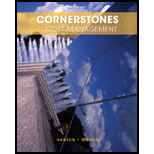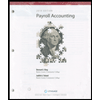
Sixty employees (all CPAs) of a local public accounting firm eat lunch at least twice weekly at a very popular pizza restaurant. The pizza restaurant recently began offering discounts for groups of 15 or more. Groups would be seated in a separate room, served individual bowls of salad costing $2 each, pitchers of root beer costing $3 each (each pitcher has a five-glass capacity), and medium, two-topping pizzas for $10 (10 slices each). The food would have to be ordered in advance.
Thirty of the CPAs commit to eating three slices of pizza, three glasses of root beer, and one bowl of salad [a consumption pattern of (3,3,1)]. The other 30 are more hearty eaters and commit to seven slices of pizza, two glasses of root beer, and one bowl of salad [a consumption pattern of (7,2,1)]. Each member of the group must pay an assessed amount for the lunch.
After some detailed polling among the 60, four types of eaters were identified: two types of light eaters and two types of heavy eaters. The consumption patterns for each group are given (slices of pizza, glasses of root beer, and bowls of salad): Light Eaters (Group A): A1 = (2,2,1) and A2 = (3,3,1); Heavy Eaters (Group B): B1 = (6,3,1) and B2 = (7,2,1). There are an equal number of CPAs in each of the four groups.
Required:
- 1. Calculate the average lunch cost for each CPA in each of the two groups, A and B. Compare this to the ABC cost assignments. Discuss the merits of grouping based on similarity. Discuss the analogy to multiple-product value streams.
- 2. Suppose that members of the heavy-eating group (Group B) decided that they were eating more than necessary for their health and well-being and decided to reduce their total calories. They therefore agreed to reduce consumption of pizza by one slice and consumption of root beer by one glass for each member of the group. Relative to the original order, how much extra capacity exists? If the excess capacity is eliminated by reducing the order, what is the new average cost? Suppose that the decision is to use the extra capacity to invite four guests (two of Type B1 and two of Type B2) to lunch (at the cost of the CPAs). If the original order is used as the benchmark cost, what is the extra cost of the guest program? Comment on the conceptual significance of this for manufacturing firms.
2.
Compute the average cost of lunch to be paid by each CPA for both the groups and compare the result with the ABC cost.
Explanation of Solution
Value stream: The value stream refers to all the processes involved in the production of a product from the starting point to the finished product, till it reaches the hands of the customer.
Focused value stream: The focused value stream refers to all the processes involved in the production of one particular product from the starting point to the finished product, till it reaches the hands of the customer.
Activity-based costing: It is a method that helps in finding the activities performed by a company and it tracks the indirect costs to the activities of the company that consumes resources.
Compute the total lunch cost for Group A:
| Particulars | Number of Units (A) | Cost per Unit (B) | Amount |
| Pizza | 8 | $10 | $80 |
| Root Beer | 15 | $3 | $45 |
| Salad | 30 | $2 | $60 |
| Total Cost | $185 |
Table (1)
Working Notes:
Compute the number of pizzas to be ordered by Group A:
Compute the number of pitchers of root beer to be ordered by Group A:
Compute the number of bowls of salad to be ordered by Group A:
Compute the average cost of lunch for Group A:
The average cost of lunch for Group A is $6.17.
Compute the ABC cost of each item:
| Particulars | Cost per Unit (A) | Number of Units (B) | Amount |
| Pizza | $10 | 10 | $1.00 |
| Root Beer | $3 | 5 | $0.60 |
| Salad | $2 | 1 | $2.00 |
| ABC Cost | $3.60 |
Table (2)
The unit cost as per ABC costing is $3.60.
Using the ABC cost compute, the average lunch cost for Group A1:
| Particulars | Number of Units (A) | Cost per Unit (B) | Amount |
| Pizza | 2 | $1.00 | $2 |
| Root Beer | 2 | $0.60 | $1 |
| Salad | 1 | $2.00 | $2 |
| Total Cost | $5.20 |
Table (3)
The average lunch cost for Group A1, using ABC costing is $S5.20.
Using the ABC cost compute, the average lunch cost for Group A2:
| Particulars | Number of Units (A) | Cost per Unit (B) | Amount |
| Pizza | 3 | $1.00 | $3 |
| Root Beer | 3 | $0.60 | $2 |
| Salad | 1 | $2.00 | $2 |
| Total Cost | $6.80 |
Table (4)
The average lunch cost for Group A2, using ABC costing is $6.80.
Compute the total lunch cost for Group B:
| Particulars | Number of Units (A) | Cost per Unit (B) | Amount |
| Pizza | 20 | $10 | $200 |
| Root Beer | 15 | $3 | $45 |
| Salad | 30 | $2 | $60 |
| Total Cost | $305 |
Table (5)
Working Notes:
Compute the number of pizzas to be ordered by Group B:
Compute the number of pitchers of root beer to be ordered by Group B:
Compute the number of bowls of salad to be ordered by Group B:
Compute the average cost of lunch for Group B:
The average cost of lunch for Group B is $10.17.
Compute the ABC cost of each item:
| Particulars | Cost per Unit (A) | Number of Units (B) | Amount |
| Pizza | $10 | 10 | $1.00 |
| Root Beer | $3 | 5 | $0.60 |
| Salad | $2 | 1 | $2.00 |
| ABC Cost | $3.60 |
Table (6)
The unit cost as per ABC costing is $3.60.
Using the ABC cost compute, the average lunch cost for Group B1:
| Particulars | Number of Units (A) | Cost per Unit (B) | Amount |
| Pizza | 6 | $1.00 | $6 |
| Root Beer | 3 | $0.60 | $2 |
| Salad | 1 | $2.00 | $2 |
| Total Cost | $9.80 |
Table (7)
The average lunch cost for Group B1, using ABC costing is $9.80.
Using the ABC cost compute, the average lunch cost for Group B2:
| Particulars | Number of Units (A) | Cost per Unit (B) | Amount |
| Pizza | 7 | $1.00 | $7 |
| Root Beer | 2 | $0.60 | $1 |
| Salad | 1 | $2.00 | $2 |
| Total Cost | $10.20 |
Table (8)
The average lunch cost for Group B2, using ABC costing is $10.20.
The ABC cost of Group B are more alike to the average cost of Group B as the input costs are more alike and the assignment of these costs are analogous. Hence, the costing is more similar.
2.
Identify the excess capacity on the basis of new proposal, and the decision to invite guests to fill the excess capacity. Describe the conceptual significance as well.
Explanation of Solution
The new proposal shall have an excess capacity of 30 slices of pizza, which makes 3 pizzas and 30 glasses of Root beer which shall sum up to 6 pitchers of Root beer. The guests can be invited and offered the now excess 3 pizzas and 6 pitchers of Root beer.
| Particulars | Number of Units (A) | Cost per Unit (B) | Amount |
| Pizza | 30 | $1.00 | $30 |
| Root Beer | 30 | $0.60 | $18 |
| Excess amount | $48.00 |
The amount that could be saved is $257
In a manufacturing industry, reduction of wastes shall provide for greater productivity and optimize the profitability of the firm.
Want to see more full solutions like this?
Chapter 15 Solutions
Cornerstones of Cost Management (Cornerstones Series)
- Marin Company is a manufacturer of smartphones. Its controller resigned in October 2025. An inexperienced assistant accountant has prepared the following income statement for the month of October 2025. Marin Company Income Statement For the Month Ended October 31, 2025 Sales revenue $998,400 Less: Operating expenses Raw materials purchases $337,920 Direct labor cost 243,200 Advertising expense 115,200 Selling and administrative salaries 96,000 Rent on factory facilities 76,800 Depreciation on sales equipment 57,600 Depreciation on factory equipment 39,680 Indirect labor cost 35,840 Utilities expense 15,360 Insurance expense 10,240 1,027,840 Net loss $(29,440) Prior to October 2025, the company had been profitable every month. The company's president is concerned about the accuracy of the income statement. As her friend, you have been asked to review the income statement and make necessary corrections. After examining other manufacturing cost data, you have acquired additional…arrow_forwardProvide answerarrow_forwardMCQarrow_forward
- Exercise 3-12A (Algo) Conducting sensitivity analysis using a spreadsheet LO 3-5 Use the below table to answer the following questions. Selling Price$27.00 Variable 2,100 3,100 Fixed Cost Cost Sales Volume 4,100 Profitability 5,100 6,100 $25,700 8 $14,200 $33,200 $52,200 $71,200 $90,200 25,700 9 12,100 30,100 48,100 66,100 84,100 25,700 10 10,000 27,000 44,000 61,000 78,000 35,700 8 4,200 23,200 42,200 61,200 80,200 35,700 9 2,100 20,100 38,100 56,100 74,100 35,700 10 17,000 34,000 51,000 68,000 45,700 8 (5,800) 13,200 32,200 51,200 70,200 45,700 9 (7,900) 10,100 28,100 46,100 64,100 45,700 10 (10,000) 7,000 24,000 41,000 58,000 Required a. Determine the sales volume, fixed cost, and variable cost per unit at the break-even point. b. Determine the expected profit if Rundle projects the following data for Delatine: sales, 4,100 bottles; fixed cost, $25,700; and variable cost per unit, $10. c. Rundle is considering new circumstances that would change the conditions described in…arrow_forwardWhich of the following would be classified as a current liability ?arrow_forwardProvide correct answer general Accounting questionarrow_forward
- Calculate the firm's annual cash flows associated with the new project?General accountingarrow_forwardThe following balance sheet for the Hubbard Corporation was prepared by the company: HUBBARD CORPORATION Balance Sheet At December 31, 2024 Assets Buildings Land Cash Accounts receivable (net) Inventory Machinery Patent (net) Investment in equity securities Total assets Accounts payable $ 763,000 289,000 73,000 146,000 266,000 293,000 113,000 86,000 Liabilities and Shareholders' Equity Accumulated depreciation Notes payable Appreciation of inventory Common stock (authorized and issued 113,000 shares of no par stock) $ 2,029,000 $ 228,000 268,000 526,000 93,000 452,000 Retained earnings 462,000 Total liabilities and shareholders' equity $ 2,029,000 Additional information: 1. The buildings, land, and machinery are all stated at cost except for a parcel of land that the company is holding for future sale. The land originally cost $63,000 but, due to a significant increase in market value, is listed at $146,000. The increase in the land account was credited to retained earnings. 2. The…arrow_forwardProvide correct answer this general accounting questionarrow_forward
 Cornerstones of Cost Management (Cornerstones Ser...AccountingISBN:9781305970663Author:Don R. Hansen, Maryanne M. MowenPublisher:Cengage Learning
Cornerstones of Cost Management (Cornerstones Ser...AccountingISBN:9781305970663Author:Don R. Hansen, Maryanne M. MowenPublisher:Cengage Learning Intermediate Accounting: Reporting And AnalysisAccountingISBN:9781337788281Author:James M. Wahlen, Jefferson P. Jones, Donald PagachPublisher:Cengage Learning
Intermediate Accounting: Reporting And AnalysisAccountingISBN:9781337788281Author:James M. Wahlen, Jefferson P. Jones, Donald PagachPublisher:Cengage Learning



